The Mysterious Woman Who Lived Alone on San Nicolas Island After Surviving a Tribal Massacre The story of this woman has garnered attention from researchers due to its surprising revelations.
In 1853, a group of otter hunters from Santa Barbara, California, USA, arrived at one of the most remote islands in the Channel Islands archipelago, where they discovered a woman approximately 50 years old speaking a language that no one could understand.
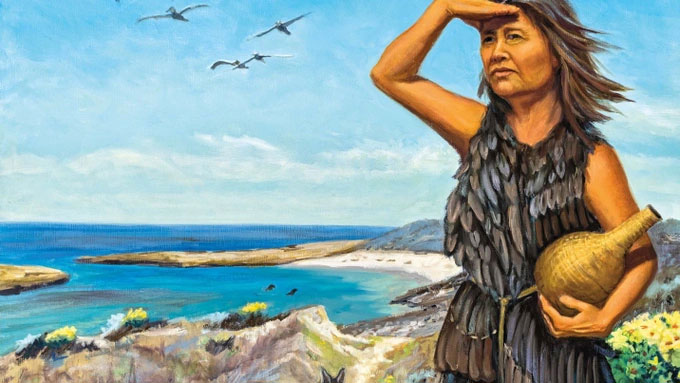
Illustration of the mysterious woman who lived for nearly two decades on San Nicolas Island. (Photo: Halmon).
Numerous rumors and gossip about this mysterious woman circulated in American society at the time, sparking curiosity among archaeologists, linguists, and historians. Their research has uncovered many surprising details.
Many hypotheses have been proposed, suggesting that Maria (the name given to the woman after her death) might be the last member of the Nicoleño tribe that once inhabited this archipelago.
Additionally, this woman may have lived alone on San Nicolas for 18 years, creating a captivating historical narrative. Details about Maria’s life continue to be explored by historians and archaeologists, revealing numerous insights.
The Massacre of the Tribe
The Channel Islands are located about 60 miles off the coast of California, USA, in cold waters. Among them, San Nicolas Island is the most remote and was once used by the U.S. Navy for weapon testing.
In the 19th century, this was home to Native Americans who had lived there for thousands of years and were referred to by Spanish colonizers as the Nicoleño tribe.
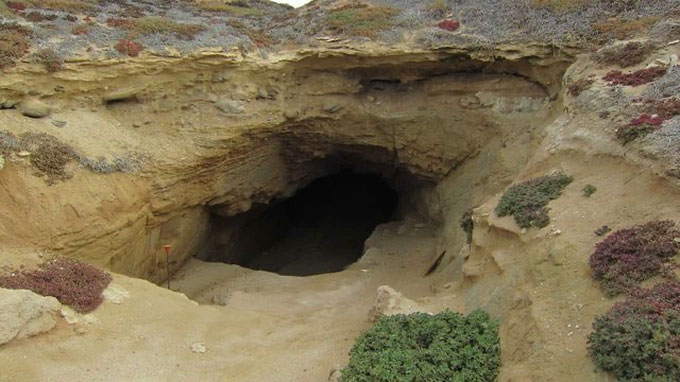
A cave on San Nicolas Island believed to be the home of the mysterious woman. (Photo: Andrea Howry).
This desolate island is covered with sand dunes and was largely overlooked by early European explorers. Beginning in 1814, Russian otter hunters landed on San Nicolas in search of valuable furs, resulting in the slaughter of over 90% of the Nicoleño tribe living on the island.
Contemporary documents reveal that the massacre occurred after the Nicoleño tribe killed a member of this hunting party upon their arrival.
By 1835, the surviving Nicoleños were rescued and taken on a sailing ship to Los Angeles, while the once-abundant otter population of the islands had been nearly hunted to extinction.
The Nicoleño tribe left their ancestral home, but one person remained.
In 1853, after rumors spread from the group of otter hunters in Santa Barbara about this mysterious woman, an expedition led by American scientists found and “rescued” her, dressed in a greenish-blue dress made of bird feathers.
On the island, they observed that the woman lived in a hut made from whale bones or slept in caves, with her daily food sourced from sparrows, seals, root vegetables, abalone, and more.
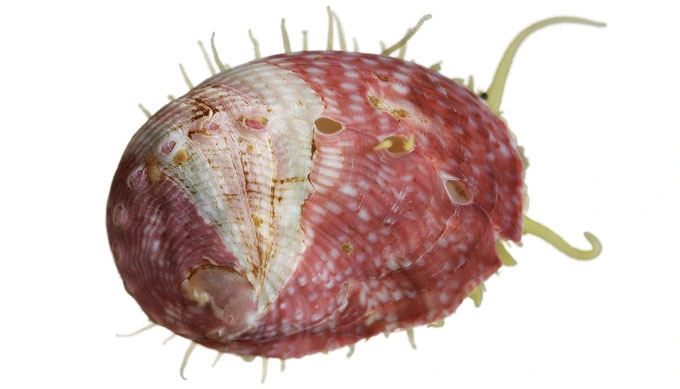
Abalone was one of the woman’s daily meals. (Illustrative image).
Later, Maria was taken to the mainland to live in a brick house in Santa Barbara, but it seemed she could not adapt to the environment there.
Language barriers, along with diseases on the mainland (possibly due to her not receiving vaccinations), led to Maria’s death seven weeks after her rescue. Before she passed away, a Catholic missionary named her “Juana Maria.”
Maria’s story of wild solitude on the island, natural beauty, indigenous courage, and tragic fate attracted the attention of author Scott O’Dell, who wrote the book “Island of the Blue Dolphins,” published in 1960, based on this true story.
The book fictionalizes the lonely woman as a resilient teenage girl named Karana, creating a portrait of a girl coming of age and facing extreme hardships.
Truth Slowly Revealed
In the early 20th century, archaeologists returned to San Nicolas Island to seek more information about Juana Maria. They surveyed over 500 sites on the island and discovered remnants such as huts made from whale bones, which seem to be the homes Maria built previously.
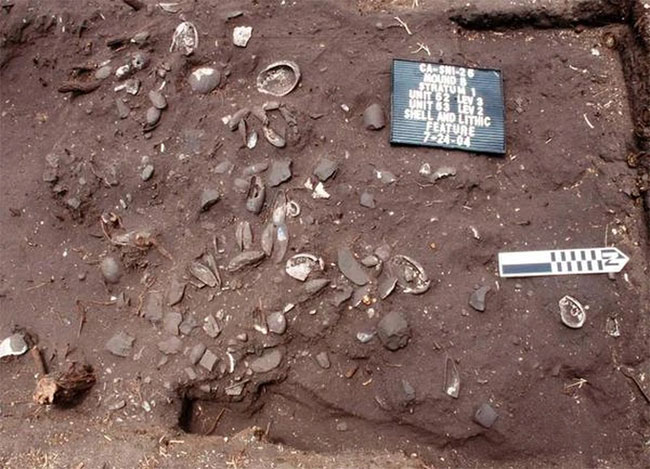
A mound containing shells discovered by a team of archaeologists on San Nicolas Island. (Photo: Hanson).
Archaeological and genetic evidence suggests that the Nicoleño tribe on San Nicolas Island may have been inhabited for around 8,000 years. Remaining artifacts on the island, such as arrowheads and caves marked with whale images, indicate that their culture had a close relationship with the ocean through marine hunting.
Notably, according to scientists, starting from the 17th century, it appears that this tribe accepted the presence of otter hunters from Mexico, Russia, Alaska, and other parts of the world.
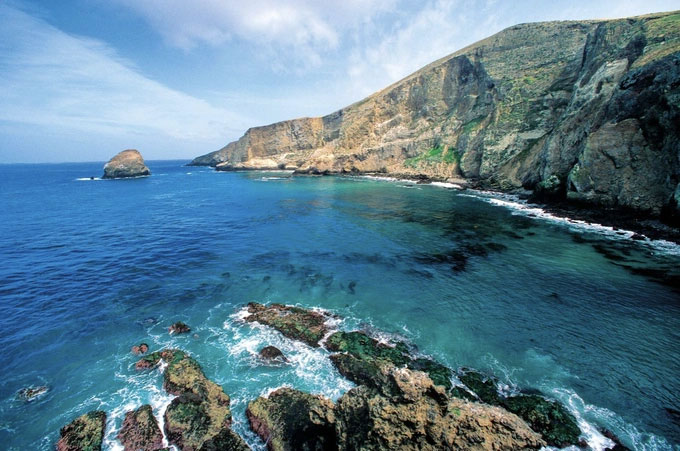
Santa Barbara Island is one of the islands closest to San Nicolas.
Santa Barbara Island is one of the islands closest to San Nicolas. Archaeologists believe that the Nicoleño and other tribes may have visited it seasonally for fishing and harvesting shellfish but did not settle there.
Dr. Susan Morris, a historical researcher, has spent years debunking myths and skepticism surrounding Maria. Her research team traced the Nicoleños who left the island in 1835 and discovered that at least seven of them settled in Los Angeles and lived normal lives.
Among them was a man named Tomas, who outlived Maria and disproved the theory that she was the last of her tribe.
Moreover, claims that no one could communicate with her were also inaccurate. Linguists studied Maria’s dialect, which is related to the Takic language branch (now referred to as California languages).
This woman managed to converse with those who could understand her while attempting to share her stories.
Evidence has shown that the tale of white men taking the lonely woman to Santa Barbara and the reason she remained on the island due to a lost baby, later devoured by wild dogs, is entirely fabricated.
Dr. Morris and her colleagues referred to the notes of ethnographer John Peabody Harrington, who interviewed some members of the tribe living in California regarding this woman’s story in the late 19th century, discovering that she had actually been on the island with her son.
For many years, the pair thrived together on the island. The mother only left San Nicolas after the tragic death of her son, which historians believe may have been due to a shark attack.
Today, scholars continue to investigate the vibrant cultures that thrived on the Channel Islands, California. The residents of this archipelago have ties to the Gabrieleño people—natives employed by Spanish missionaries to work at the San Gabriel Mission in the 1700s.
The search for more information about the mysterious woman continues. Morris’s research team is shifting their focus to seek out surviving descendants of this tribe, whom she believes may still reside in Los Angeles, USA.
“They lived on this land for thousands of years, and they continue to live here to this day,” researcher Morris added.


















































